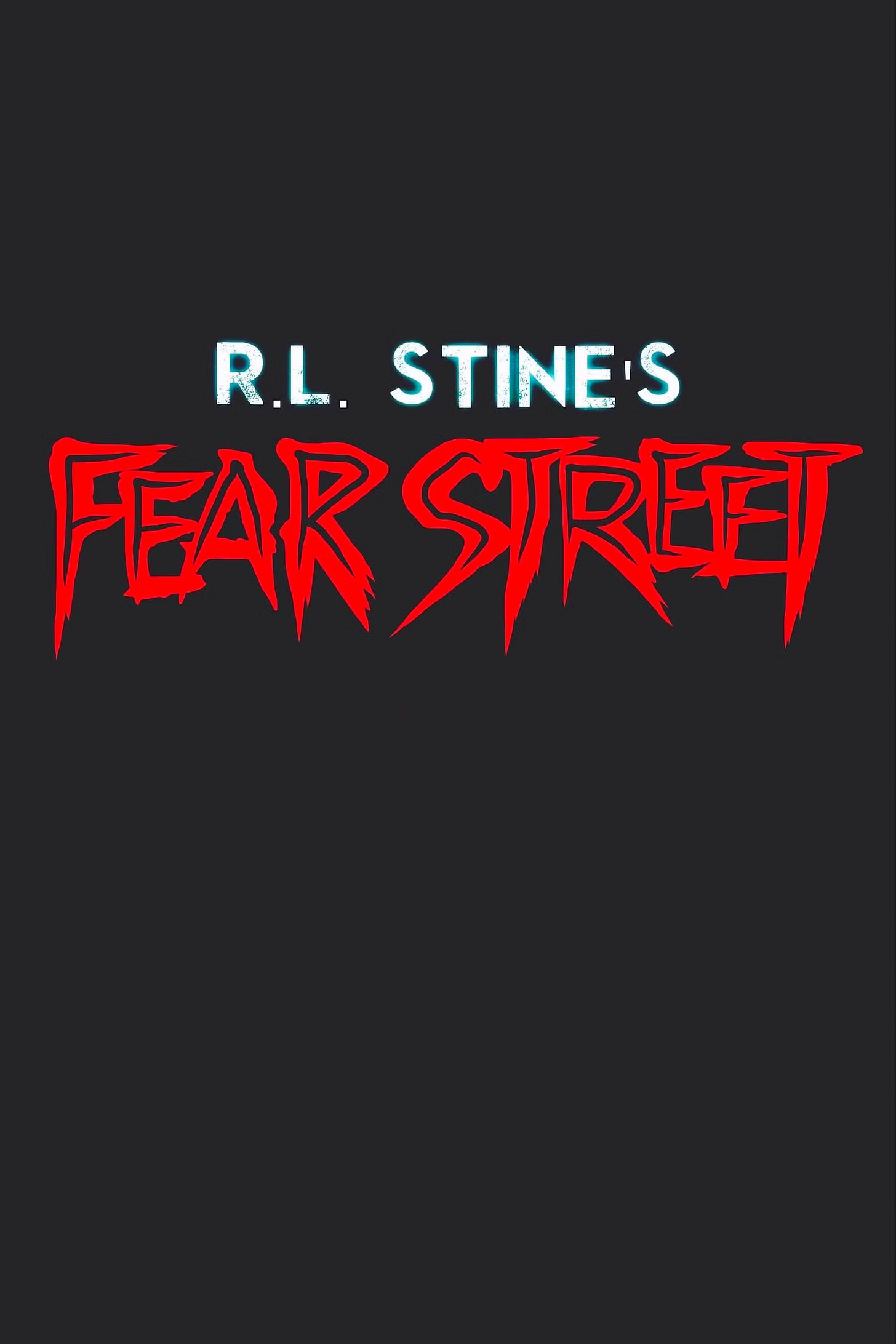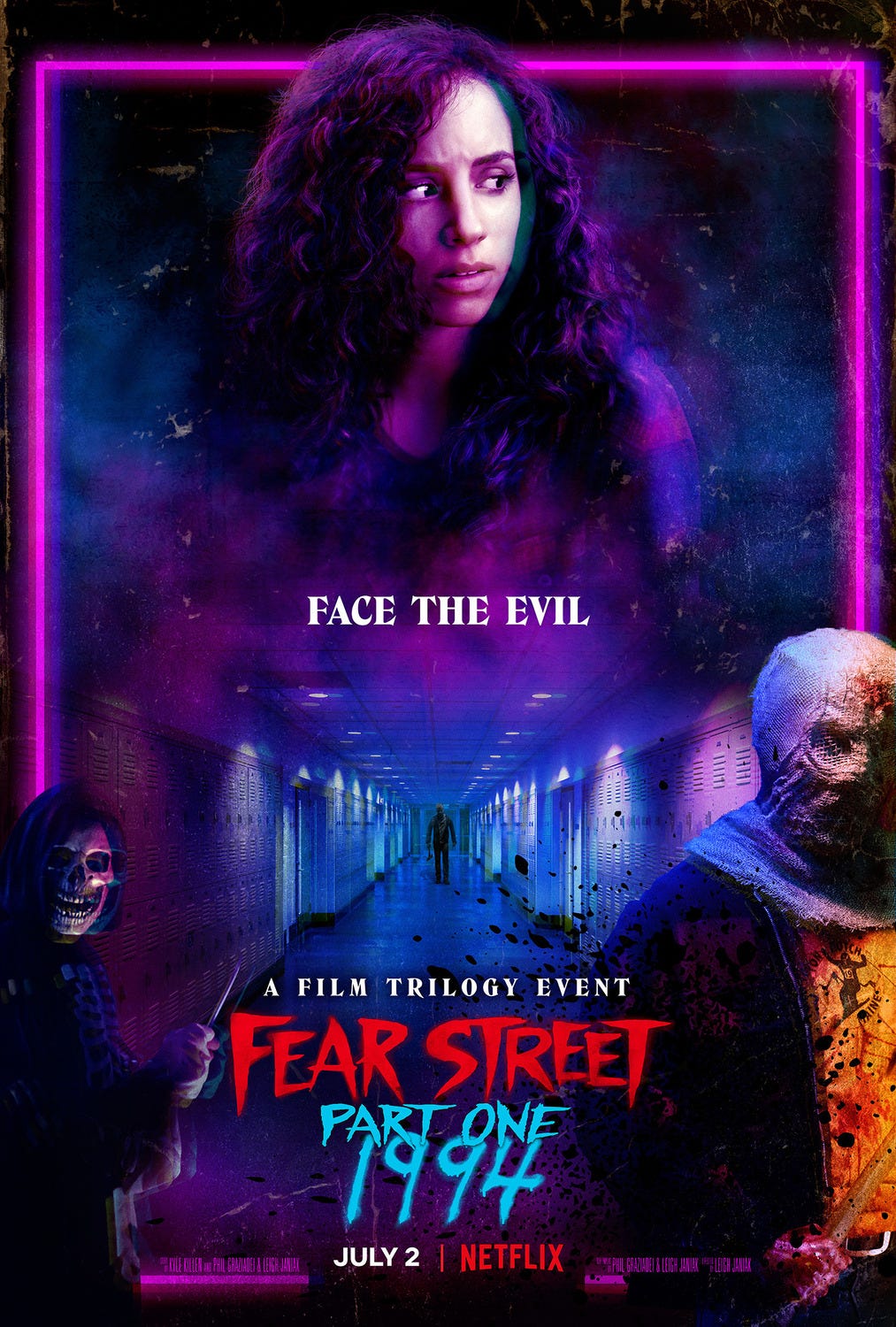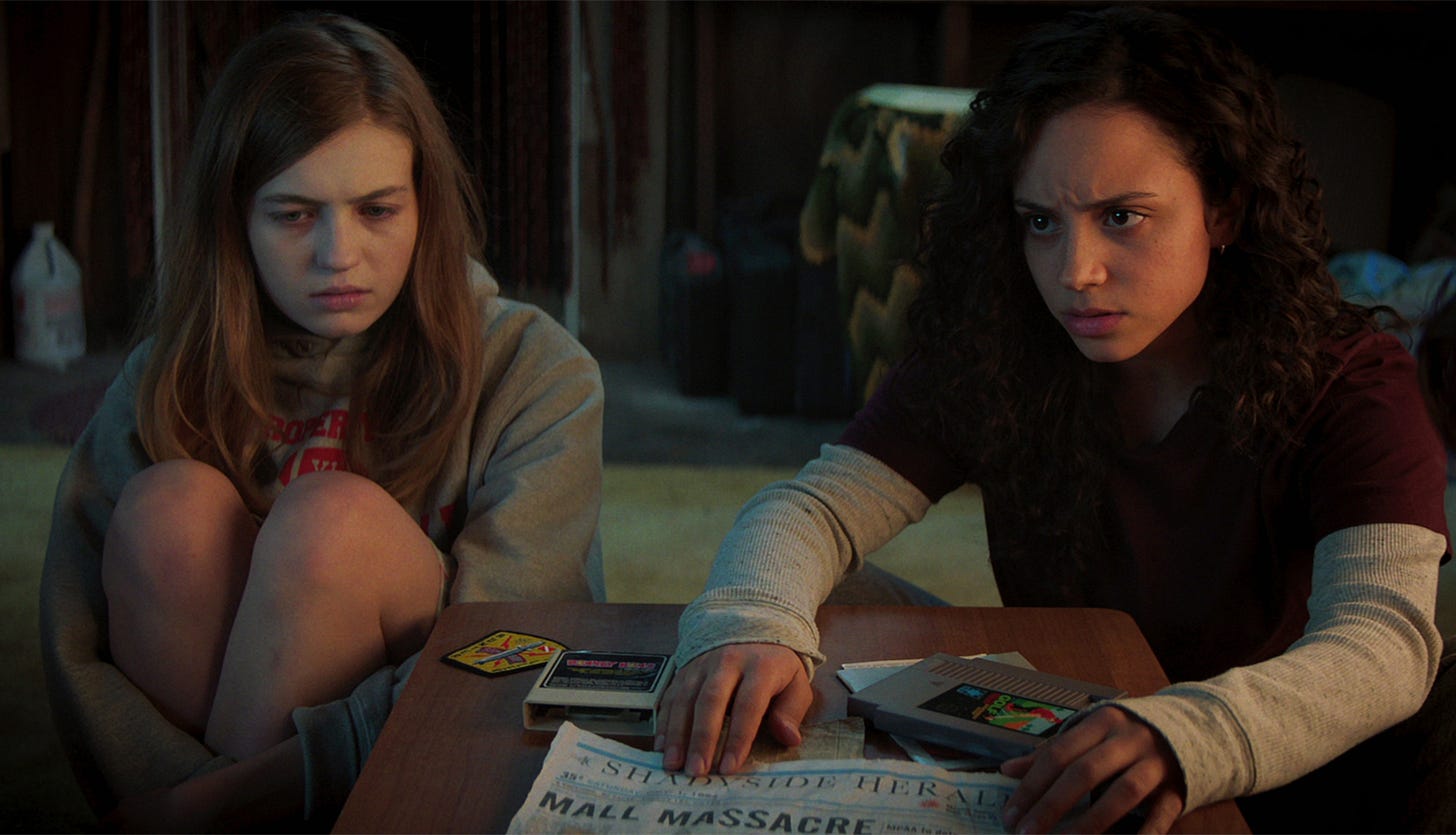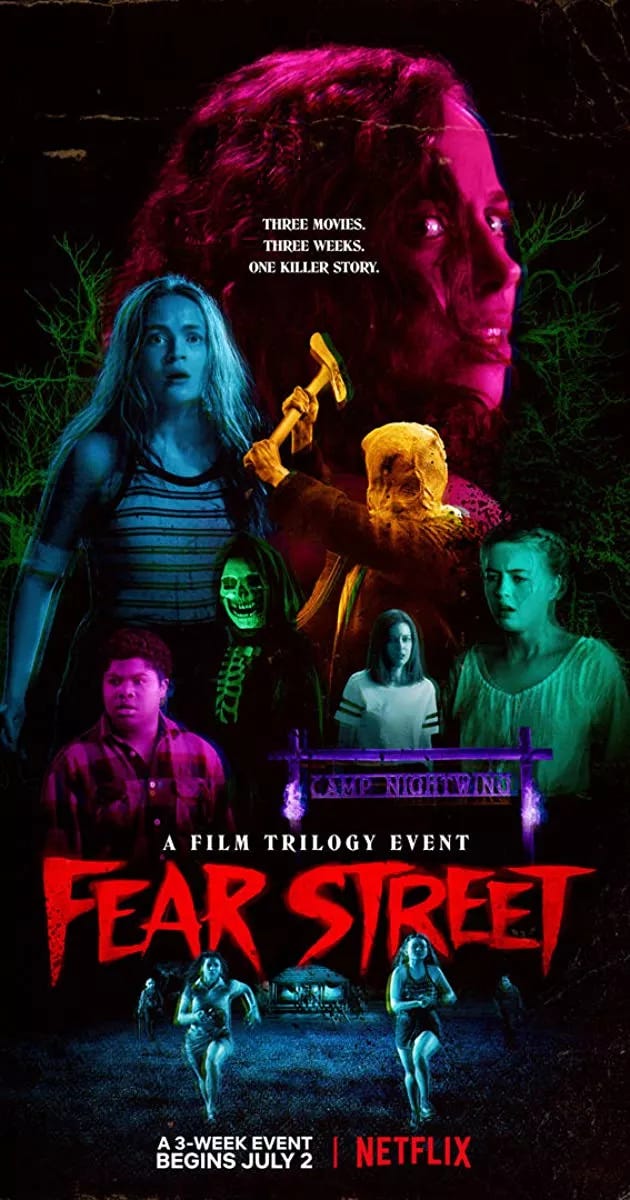Fear Street: A Perfect Slasher Horror Trilogy (Netflix)
It All Started with Sarah Fier
Netflix recently released From Queen, a new series set in the Fear Street universe. Hearing that it expands the world of the original trilogy immediately brought those earlier films back to mind.
I’ve always loved mystery, occult, and horror genres, but I’m usually not drawn to gore or slasher films. Fear Street was a rare exception. I loved it—not because of the blood or the kills, but because of the story, the emotional weight, and the structural elegance beneath the genre exterior.
Before diving into From Queen, I wanted to revisit and introduce the trilogy that started it all. This isn’t just a prequel—it’s the root of everything that follows, and understanding its tone and themes only deepens the experience.
So this piece is both an introduction for those who haven’t seen the Fear Street trilogy, and a chance to take a step back and reflect for those who have.
Opening: A Perfectly Balanced Genre Experiment
I’m genuinely excited to be writing about Netflix’s Fear Street trilogy. It’s one of those rare works that brings together so many of the genres I personally love, and as a creator, I found it to be a remarkably refined example of how genre conventions can be observed, challenged, and beautifully recombined.
The series blends mystery, occult horror, slasher violence, teen drama, and adventure into a single cohesive narrative. Genre mixing often risks tonal collapse or structural imbalance, but Fear Street turns that very hybridity into its core strength.
Based on R.L. Stine’s 1990s teen horror novels, the trilogy reimagines its source material for an adult audience. But more than a simple reboot, it takes full advantage of Netflix’s flexible format to construct a bold, serialized narrative experiment.
What’s most impressive is how it embraces such a wide range of genres without compromising any of them. Each element retains its own integrity, while being seamlessly integrated into a three-part structure that holds the viewer’s attention from beginning to end.
Worldbuilding & Concept: Two Towns, One Curse
The story unfolds between two neighboring towns: Shadyside and Sunnyvale. As their names suggest, Shadyside is a place cloaked in darkness and misfortune. It’s home to the working class, a place where accidents, tragedies, and above all, brutal serial murders occur with disturbing regularity—a town defined by despair.
Sunnyvale, on the other hand, is the exact opposite. It’s affluent, orderly, and nearly untouched by crime. Everyone seems happy, successful, and there’s an unwavering belief that their good fortune will continue indefinitely.
Though separated only by a single river, the contrast between these two towns couldn’t be more stark. And behind the decades of repeated tragedies in Shadyside lies an old legend—one that blames everything on the curse of a witch named Sarah Fier.
At the center of it all is Deena Johnson, a teenager from Shadyside. When another wave of murders begins, she and her friends find themselves caught in the storm, forced to confront the town’s long-standing curse head-on.
The Fear Street trilogy unfolds across multiple time periods, using different characters and settings to weave a single, layered story about fear, injustice, and the weight of history.
Cultural Detail: Class-Based Horror and the Mark of Social Stigma
The contrast between Shadyside and Sunnyvale isn’t simply a binary of light versus dark. Even in a society without formal class divisions, Fear Street reveals how class is shaped and solidified by access to capital, environment, and opportunity. The trilogy embeds this structural inequality into the framework of teen horror with startling clarity.
In Shadyside, poverty and violence are part of everyday life. Kids grow up internalizing limitations—dreams feel irrelevant, and ambition is a foreign concept. Many turn to drugs or cycle through low-wage jobs, and the only glimmer of hope is the fantasy of someday escaping the town altogether.
The so-called “witch’s curse” functions as more than a supernatural explanation—it becomes a metaphor for how society reinforces and legitimizes systemic despair. The idea that “you’ll never make it out” is taught early, echoing the way education and culture often teach young people to accept the limits of their social position.
In the opening of Part One, as Deena rides a bus into Sunnyvale, the camera captures the stark contrast between the two towns in just a few quick shots—abandoned buildings on one side, pristine suburban lawns on the other. It’s not just visual mise-en-scène; it’s a shorthand for an invisible barrier between those who are allowed to hope, and those who are not.
Shadyside also features a higher presence of characters from marginalized identities—both racially and sexually. Deena herself is in a lesbian relationship, which adds another layer of conflict between who she is and the world that continually confines her.
So while Fear Street wears the mask of a slasher horror film, it refuses to remain just that. Beneath the genre pleasures lies a sharp critique of social stratification and institutionalized stigma. As the story progresses, it becomes clear that the real horror isn’t the witch’s curse—it’s how deeply that curse mirrors the way society marks, limits, and internalizes our fates.
Direction & Visual Design: A Genre’s Evolution Through Time
The Fear Street trilogy spans three distinct time periods—1994, 1978, and 1666—to build a single, interconnected narrative of an enduring curse. Structurally, the story moves in reverse. It starts in the present, works its way backward, and ultimately lands at the origin point. This inversion of temporal flow allows each installment to adopt and reflect the stylistic hallmarks of the horror genre across different eras.
Each chapter is stylistically distinct. Part One: 1994 channels the energy of a teen mystery-slasher, infused with era-specific elements like video games, shopping malls, and a gothic-tinged soundtrack. The film juxtaposes queer romance with serial murder, threading both through the lens of 1990s teen angst.
Part Two: 1978 pays direct homage to classic summer camp slashers, particularly Friday the 13th. The gore is raw, the atmosphere claustrophobic, and the aesthetic meticulously attuned to its time—complete with era-specific lighting, makeup, and color grading that immerse the viewer in a distinctly ‘70s texture.
Part Three: 1666 shifts into the folk horror mode, exploring the origins of the curse in a puritanical colonial setting. The visual world is stripped down—lit by candlelight, grounded in earth and blood—evoking a sense of historical otherness. Far from being a simple conclusion, this final chapter functions as a structural fulcrum that recontextualizes the entire trilogy.
Technically, the trilogy excels at differentiating the visual tone of each era. Through distinct palettes, lighting schemes, and textures, the films intuitively guide the viewer through time. These stylistic shifts do more than define aesthetic; they support the emotional rhythm and thematic coherence of the narrative.
The performances are solid across the board, but particularly notable is Kiana Madeira as Deena Johnson. She carries the emotional weight of the series with ease, balancing a quietly defiant energy with a strikingly androgynous presence. By Part Three, she seems to embody the full arc of the story—her face alone anchoring the trilogy’s emotional core. Through her, the film doesn’t just tell us Deena is central to Fear Street; it makes us believe it.
Narrative Structure & Flow: Emotional Continuity, Structural Precision
Starting in the present and moving backward through time can be a risky narrative choice. Once the audience has emotionally invested in a protagonist, shifting to an entirely different era and set of characters can break that connection, forcing them to start over. That emotional reset can be jarring—and potentially boring.
But Fear Street avoids that pitfall almost entirely. Its core concept—an ancient witch’s curse and the cycle of brutal murders it perpetuates—is so compelling and tightly constructed that it binds the trilogy together across time periods. Even as the faces and settings change, the emotional throughline remains intact.
The story begins at the end and works its way backward. It’s only in the final installment that all the pieces fall into place, revealing the true origin of the curse. This reverse chronology is more than just a narrative gimmick; it actively engages the viewer’s interpretive instincts, creating a puzzle-like structure that deepens the overall impact.
Each film stands on its own but also operates as a cog in the larger narrative machine. Tonally, each chapter takes on a different emotional register: Part One captures fear and rebellion, Part Two leans into despair and survival, and Part Three centers on truth and release. These emotional arcs don’t just progress chronologically—they stack on top of each other, forming a kind of narrative pyramid that crescendos rather than simply concludes.
The pacing is also impressively managed. Each installment runs just under two hours, and the storytelling maintains a consistent rhythm without dragging. Flashbacks and exposition, which could easily bog down the narrative, instead serve to deepen character immersion and emotional weight. The balance between momentum and reflection is finely tuned.
Perhaps most remarkably, the trilogy format is fully embraced without sacrificing the integrity of each individual film. Each entry functions as a standalone genre piece, while also contributing to a larger whole. Fear Street isn’t just a connected series—it’s a set of interdependent films that enhance and expand each other with precision.
Conclusion: Between Genre Thrills and Structural Ambition
The Fear Street trilogy is a rare example of a work that delivers the full pleasures of genre while also embedding within it a sharp social consciousness and a bold narrative experiment. While it wears the mask of a slasher film, beneath that surface lie themes of class, identity, and historical oppression. It follows the grammar of genre—but also subverts it, rewrites it, and turns it inward.
Its greatest achievement may be this: that it redefines the source of fear. The true horror isn’t just the masked killer or the bloodshed—it’s the structure that sustains the violence, the system that demands obedience. The film uses the cyclical killings and supernatural curse as metaphors for how society assigns roles, contains futures, and teaches people—especially teenagers—to accept limits before they’ve even tried to push them.
In that sense, Fear Street does more than entertain—it pierces something uncomfortably contemporary.
Each installment stands as a complete and satisfying slasher film in its own right, but when viewed together, they reveal a grander architecture and a deeper genre vision. Netflix’s flexible format is used to full advantage, allowing for a serialized structure that builds tension, releases it, and expands its emotional range across three films.
Admittedly, viewers who are sensitive to gore or slasher tropes may find some scenes overwhelming. But the overarching themes and tight narrative structure set this trilogy apart from films that rely solely on shock value. For anyone who appreciates mystery, the occult, or supernatural thrillers, this is not a trilogy to overlook.
As I mentioned at the beginning, if I had to categorize this series, I’d call it a mystery-slasher-horror-adventure film. (There are a few more genres I’d like to tack on, but I’ll stop here.) What’s remarkable is how it juggles all of these without ever falling apart.
And most importantly—it’s fun. Among films of its kind, I can say with confidence: this is one of the very best.
💛 Support this publication
All posts will remain free, but if you'd like to support my work, you can become a paid subscriber.
Your support helps me keep writing, drawing, and sharing reflections from my journey in film and animation.
Thank you so much to everyone who chooses to support — it truly means a lot. 🙏









